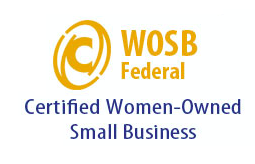
I'm inspired by a presentation I saw Brendon Burchard make in which he said that at the end of our lives, each of us wants to be able to say "YES!" to 3 questions:
- Did I live?
- Did I love?
- Did I matter?
Too often questions like these make us think about life outside of work. But they apply equally to life at work - as a matter of fact, they track with our definition of leadership.
"Leadership is using the greatness in you to achieve and sustain extraordinary outcomes by engaging the greatness in others.”
Here’s how Brendon’s 3 questions and the 3 parts of my definition are so closely tied and why putting on your mantle of leadership is the way you can live the YES!
|
Did I Live? |
"Leadership is using the greatness in you…
|
|
Did I Matter? |
…to achieve and sustain extraordinary outcomes…
|
|
Did I Love? |
…by engaging the greatness in others.”
|
Now, if you haven’t read No Ceiling, No Walls, I strongly recommend that you do. In addition to explaining the research behind the leadership definition and why it’s so powerful, you’ll also learn:
- That anyone at any level can put on a mantle of leadership – and you can too.
- What it means and what’s required to achieve and sustain extraordinary outcomes. You might think this is obvious, but 95% of women I work with don’t know this.
- The Missing 33%® - what it is, why it’s essential for you to close the gap and how to turn what’s missing into The Secret 33% of your career success equation.
- A host of other important stuff you’ll need to wear the mantle of leadership with grace and authenticity.
Did I Love?
First, know that when I speak about loving at work, I am not talking about the American over-emphasis on sexual intimacy. This should go without being said, but it’s safer to explicitly define what I mean by loving at work. Here goes.
Loving at work means 5 things:
- Support – Everyone around you has goals. If you’re in contact with them in the course of your work life that automatically means that you are in a position to help them meet their goals - whether to deliver a promised product or service on time and to high quality or to grow as a professional.
- Honor - believing that, just as you have elements of personal greatness (attributes, skills, values, worldview, etc.), so does everyone you work with. It will serve you to look for and find the greatness in each person you interact with!
- Assume positive intent - carrying into every interaction the belief that everyone is doing his or her best for where they are at the moment. Virtually no one comes to work wanting to do a bad job. Indra Nooyi, CEO PepsiCo, speaks about this when she says, "My father was an absolutely wonderful human being. From him I learned to always assume positive intent. Whatever anybody says or does, assume positive intent. You will be amazed at how your whole approach to a person or problem becomes very different. When you assume negative intent, you're angry. If you take away that anger and assume positive intent, you will be amazed. Your emotional quotient goes up because you are no longer almost random in your response. You don't get defensive. You don't scream. You are trying to understand and listen because at your basic core you are saying, ‘Maybe they are saying something to me that I'm not hearing.’ So ‘assume positive intent’...” This advice has shaped her persona at work. This is why the former PepsiCo CEO described her as "a deeply caring person” who "can relate to people from the boardroom to the front line.”
- Protect - carrying into every interaction the superordinate goal of protecting the other’s self esteem. Even when you have to deliver a very difficult message, you can do it in a way that leaves the other person whole.
- Encourage – Whether it’s to uplift someone who’s feeling down or to give a "you can do it” to someone who is daunted by a task, take advantage of opportunities to show loving concern by offering encouragement.
This is what loving at work means. You SHAPE in a positive way the experience people have when they interact with you – even if it’s on negative messaging.
Oh, and one more thing. I can’t tell you how many women have said to me, "I want to help people, so I want to go into HR (or become a trainer, become a consultant or become a coach).”
This disheartens me. If you’ve ever felt this way, recognize that it’s a sign that you don’t see the opportunities in your job or the jobs of people above you to SHAPE other’s experiences by engaging their greatness. Yes, sometimes the news is bad, but right where you are and where you might advance to your opportunities to love the people you work with and help them are amazing! Don’t pass them up.
Answering YES!
Think about the people you must engage in order to successfully take action on your outcomes above. Here there are two important categories:
- Those you need to reach out to. These are people who you need to connect with in order to make progress on your outcomes. By the way, you might not have a name, but a category. For example, to develop your ROI analysis for a new idea you might have to engage "someone from finance who can help with number crunching.”
- Those you need to respond to. These are people who have reached out to you in partnership for mutually beneficial progress on outcomes. I like to remind you here that your boss is automatically one of them. Your success is interdependently related to boss’ success.
Then, think about what greatness in them will you tap….and how? Will you make a sincere acknowledgement of Chris’ creativity? How about a sincere thank you for the recommendation Pat made? Or perhaps a courageous ask that Lee step up to a higher level of performance because you know it’s in her/his power? Or you might know of someone who needs a warm hello or expression of sympathy. And, that person in finance, you’ll be sure to verbally honor his or her financial expertise. These are the kinds of reflections to write here.
Then, and most importantly, what messages will you use to align them to your key outcomes? It’s not enough for you to engage the greatness in others. Remember this:
Being known for your amazing interpersonal skills gets you only so far in your career. To have great success you must use your strong relationships to align others to the key outcomes of the organization.
As Anne Mulcahy, former CEO and chairman of Xerox and chairman of Save the Children, made abundantly clear recently when she said, "The most powerful thing you can do in a company is to create alignment, and that happens with effective communication.”






